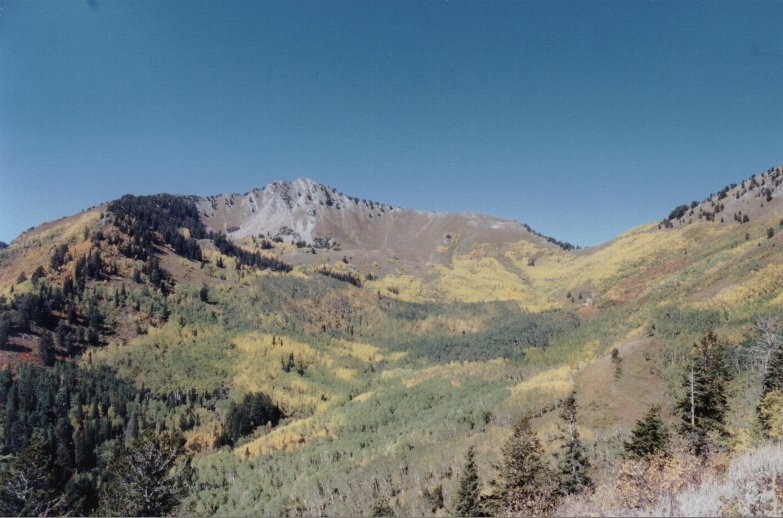
Mt. Raymond as seen from the Circle-All-Peak Ridge
The Mt. Raymond trail begins at the Butler Fork trailhead, which is 8.5 miles from the mouth of Big Cottonwood Canyon on the north side of the road. From here the trail follows the Butler Fork stream to the north. After 1/2 mile and climbing 400 feet in elevation, the trail comes to a junction. One trail turns right (east) heading toward Dog Lake and the other turns left toward Mt. Raymond. Following to the left (west) of the junction for another mile, the trail moves into a series of switchbacks leading up to a minor summit named Circle-all-peak and climbing another 900 feet.Along the latter half of these switchbacks the view is amazing. You can see most of Big Cottonwood Canyon to the east and all the ridges that surround it.
After reaching the small ridge at Circle-all-peak, the trail turns to the north and levels out. After about 1/4 of a mile the trail comes to another junction. Turn left here, and continue along the trail into Mill A Gulch. The trail remains relatively flat here as it moves through thick groves of Aspen trees and rises about 400 feet in elevation in 1 mile as it approaches Baker Pass. . At Baker Pass the trail forks off heading west and east along the ridge. The trail to the right (east) follows the ridge to the top of Gobblers Knob. Follow the trail to the left (west) and climb the ridge to the top of Mt. Raymond.
The distance from Bakers Pass to the summit is just under a mile (.81mi) and has an elevation gain of around 900 feet. The well-beaten trail along the ridge here starts off fairly steep but slightly levels out about half-way up. Keep your eyes open to the northwest along here for a unique view of Downtown Salt Lake City. The last half of the ridge gets steeper again and turns into a knife-edged ridge. Scrambling is required here but is not too difficult for most hikers. The view from the summit consists of the Salt Lake Valley, Mill creek Canyon (to the north), and pretty much all of Big Cottonwood Canyon.